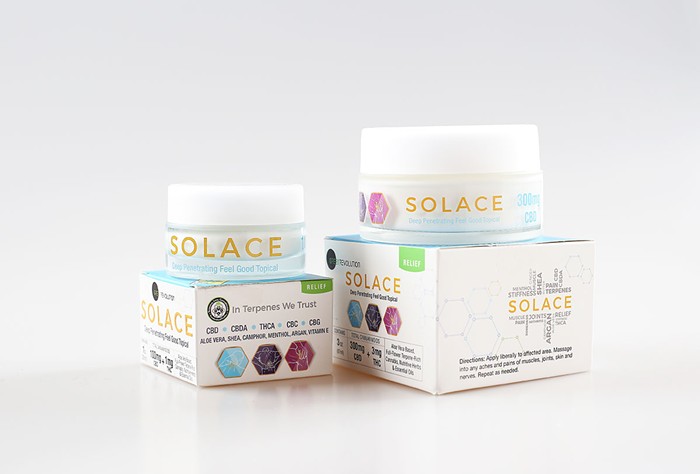Tami Mendonca's first experience with topical cannabis was a letdown. She rubbed the lotion on her skin—but instead of getting medicated pain relief, she just got oily hands.
"I was skeptical at first. I used it, and it didn't really work," she said.
Mendonca's experience was not unique—plenty of customers find pot topicals ineffective—but she wasn't just another person looking to find a therapeutic treatment for their arthritis or muscular pain. Mendonca is a registered nurse and the owner of Discovery Garden, a pot farm and processor in Port Townsend. Her experience told her that topicals should theoretically work and there was a need for topical pain relievers.
She invested in an ultrasonic machine that breaks pot's chemicals down to a smaller size so they are more absorbable by the body. She started working on recipe formulation and ultimately arrived at a product called MetaHeal.
"I'm finding that people are just amazed at how well it works on almost any kind of pain: neuropathic pain, muscular pain, joint pain, bone pain," Mendonca said.
Yes, your body can feel the effects of cannabis through your skin. No, you are almost certainly not going to get high from a topical (unless you try really, really, really hard). Pot store shelves are quickly filling up with lotions, massage oils, soaps, gels, bath bombs, lip balms, and ointments.
The chemicals in pot, called cannabinoids, are absorbed by our bodies through a neurological network called the endocannabinoid system. Most of the receptors in this system are located in your brain. When you inhale a hit of pot smoke, those cannabinoids pass through your lungs and into your bloodstream, and then click into endocannabinoid receptors in your brain. The same thing goes with edibles, but those pass through your digestive tract (hence the longer onset time).
But other endocannabinoid receptors live all around your body, including in the muscular tissue underneath your skin. That means that if you correctly infuse pot into a topical product, those cannabinoids should be able to find your receptors.
Cannabinoids like THC and CBD have strong anti-inflammatory, anti-pain, and anti-spasmodic properties. But scientists don't fully know how pot works as a topical because (as is always the case with pot) federal prohibition has made it very hard for scientists to study it.
Meanwhile, people living with debilitating conditions like back pain or arthritis aren't waiting for the federal government to catch up. They are trying these products and often finding success. Edward Lafferty, CEO of Green Revolution, another Washington pot processor that makes topicals, said the proof is in how many people are using their products in place of pharmaceutical remedies like cortisone shots.
"We are excited for science to catch up, but what proves it to us is the reviews we get," Lafferty said. "The medical benefits are obvious. If you have pain in your knees, just put it on one knee and you will see a difference."
Green Revolution has three topical products—Body Buzz, Muscle Melt, and Solace—each with a different ratio of cannabinoids and terpenes. Lafferty said they worked with a cosmetic company in Colorado to formulate their recipes for maximum absorption, as well as making sure the products didn't leave an oily residue.
"Your whole self doesn't need to get high to relieve things like knee pain," Lafferty said.
Though peer-reviewed studies do not yet exist showing the efficacy of topicals, I recently tried the Solace cream after a punishing day of snowboarding. My muscles relaxed, I was less tense, and my soreness felt like it had been smoothed away.

















